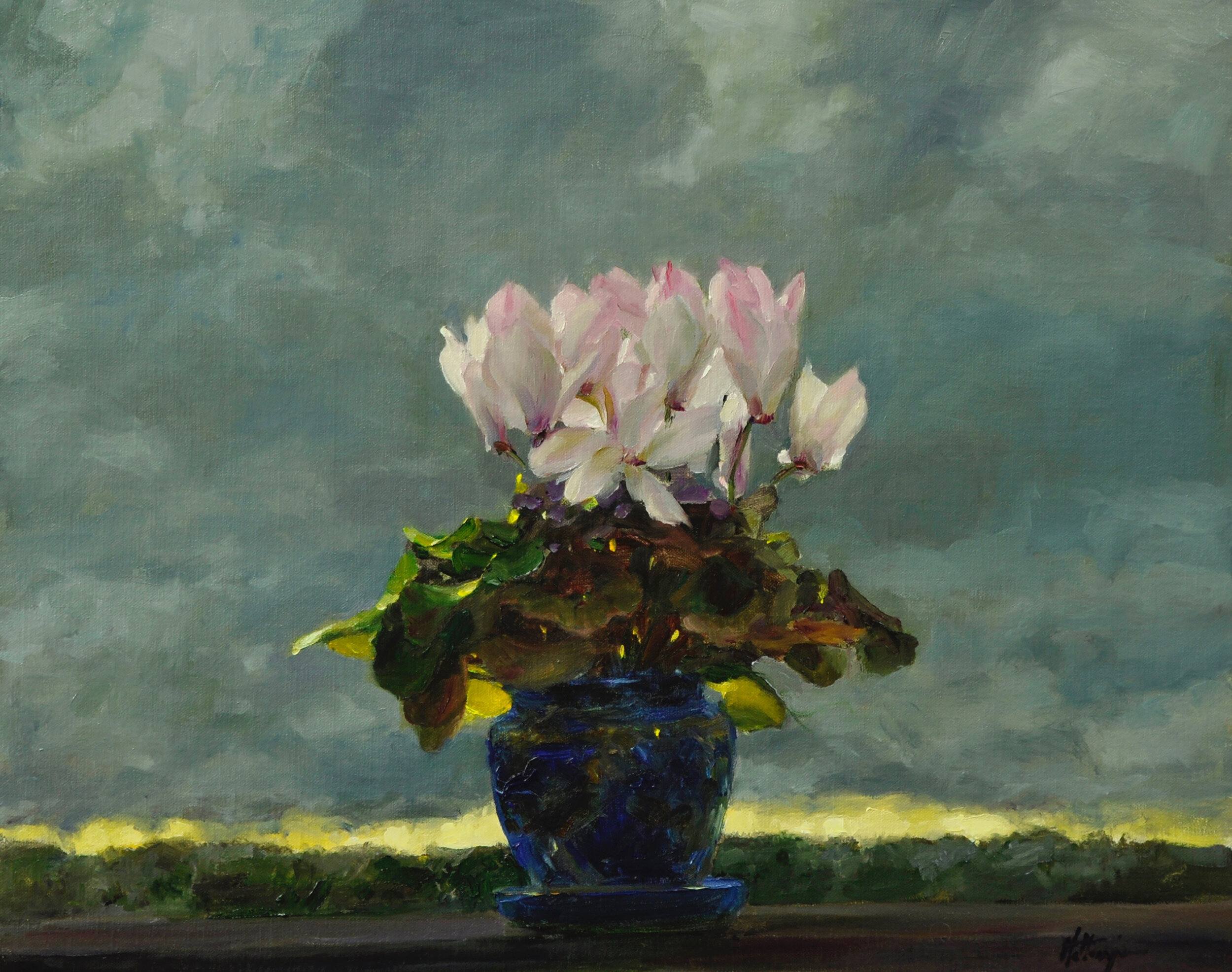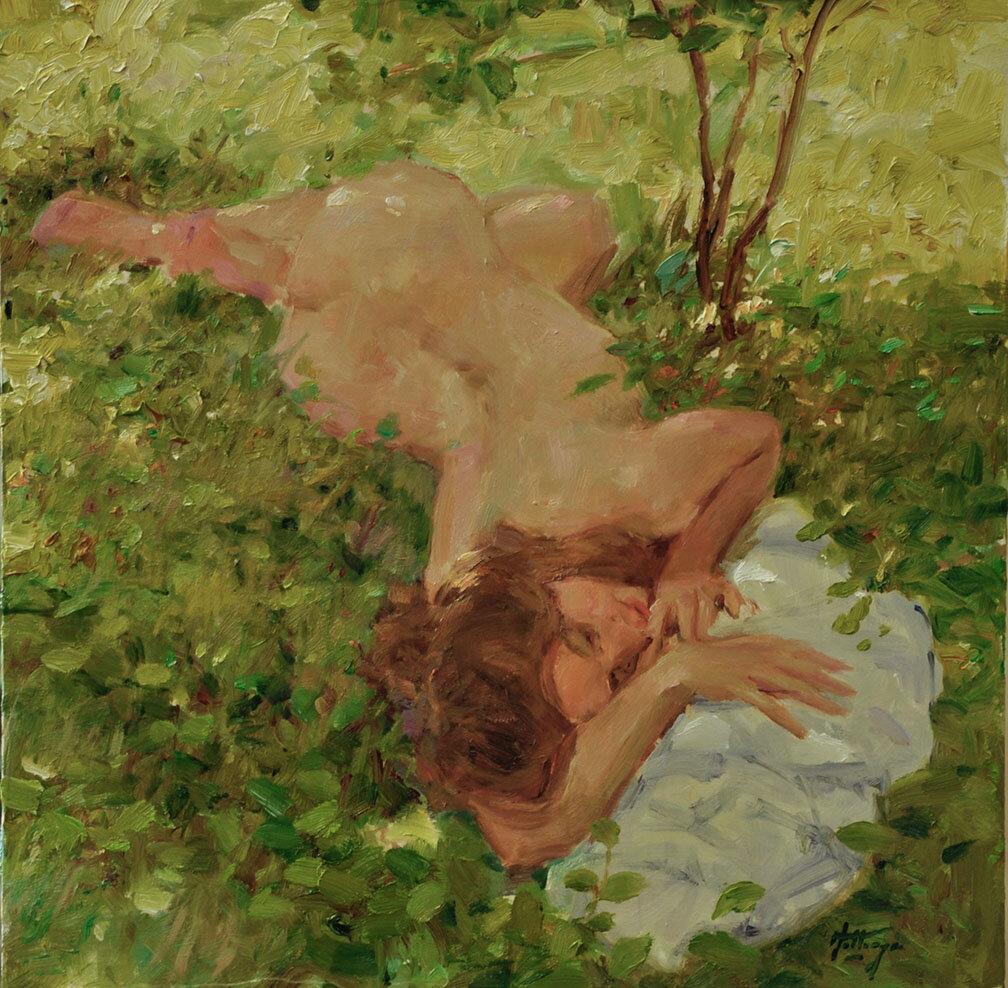Looking up from sweeping, there on the wall, was the most impressive drawing of the human figure I have ever seen. Working for Welna Gallery as a gopher I got to see some amazing art by living artists. It was important to me to study living artists, to be able to ask questions of them was such a great help. Looking up at this drawing more answers were coming to me than questions. Most drawings of the human figure are full of highlights, little dots of pure white. This drawing, by Richard Schmid, had not one highlight, making the figure look so real. Richard had captured the look of skin with conte' alone. The other thing that struck me was how he rendered the penis. For me, and many artists, how one deals with the genitals is a major problem, genitals are right there in the center of the body, limiting the poses most artists feel comfortable with. Some artists never return to the nude once out of art school.
Studying Richard's drawing that afternoon I learned more about drawing and art than I did in a year at school; not that they hadn't taught us the things I was understanding studying Richard's drawing. Looking at that piece so many things about drawing became clear. Lost and found edges, where darks are important and where to use lines and/or smudges. That night at home I went through my collection of Saturday Evening Post covers and found some of the same little nuances in Norman Rockwell paintings. It was very clear. Rockwell's knowledge of the human figure and how to capture it gave him great story telling ability with his art.
I carry all I learn from drawing and painting the human figure with me when I am out painting. Some of the best plein air workshops are actually taught in life drawing classes. What one learns in one workshop can be applied to other forms of art.




